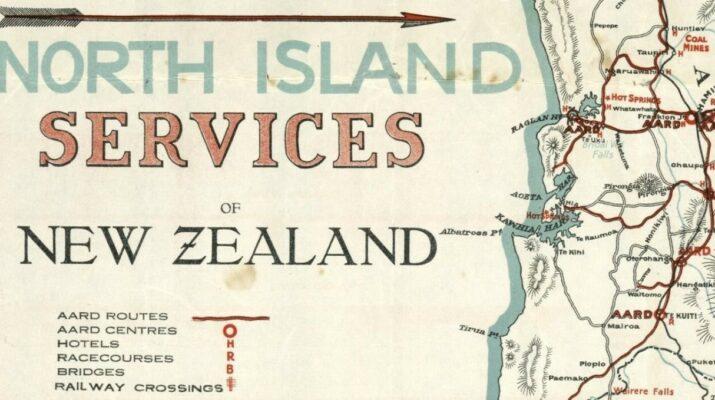Sands of time by John Lawson- Continuing our occasional history series, we look back to Whāingaroa a century ago – 1924 (Part 1)
Whāingaroa news in 1924 was again dominated by debates over who should pay for roads and it was the year when Bow St lost its spacious lawns to provide parking space. A related issue was the start of trucking cream to Frankton. It was also the last year of typhoid deaths, the year Bryant Home opened, Te Hutewai school opened, William Petchell bought a store on Bow St, building of St Peter’s church began, what is now Wyld eatery was built and when much of the bush at the top of the divi was felled.
Raglan was still a small town of about 330, though its population had almost tripled since 1900. Today it is about ten times the size and planned to grow to over 12,000 by 2070.
In October 1924 the Herald’s correspondent wrote that Raglan, “is awakening at last from a long sleep. . . During the native troubles troops were stationed at Raglan in considerable numbers. The place prospered, and land values reached a great height. But with the end of the Maori war, which never actually touched the little town or its neighbourhood, came the end also of the period of boom. . . where formerly abundant crops of wheat had been garnered, fell back into teatree and weeds. . . Better roads, better boat communication, the great growth of co-operative dairying, have changed the outlook . . . The good—in some parts splendid— motor road from Hamilton has made it possible for the dwellers in the Waikato to reach Raglan in a two hours’ run.”
In March 1924 Raglan County Council (RCC) went on a tour of the county. They took under 2 hours to get from Ngāruawāhia to Raglan. After “a very fine dinner at the Royal Hotel”, they went to Ruapuke, where a light shower made the clay road greasy, “and the cars were slipping and sliding all over the road.” All the roads were unmetalled, with the exception of the main road and about 5 miles to Te Mata, on which £2,650 was spent to March 1925, with Jerome’s deviation (which used to go down to Te Mata from the south end of Maungatawhiri Rd) metalled in November.
To 31 March 1924 RCC spent a record £43,695 on roads (£31,000 was the previous highest, in 1914), £16,000 of it for 17½ miles of metalling. However, it became the new norm, with £49,000 spent in 1926.
A Waipa County Councillor astutely pointed out that “good roads would mean the centralising of trade and the smaller towns were hardly constrained to look upon the proposal as favourably as the larger centres for that reason.” Since then the villages have lost their stores and shops such as the draper have closed.
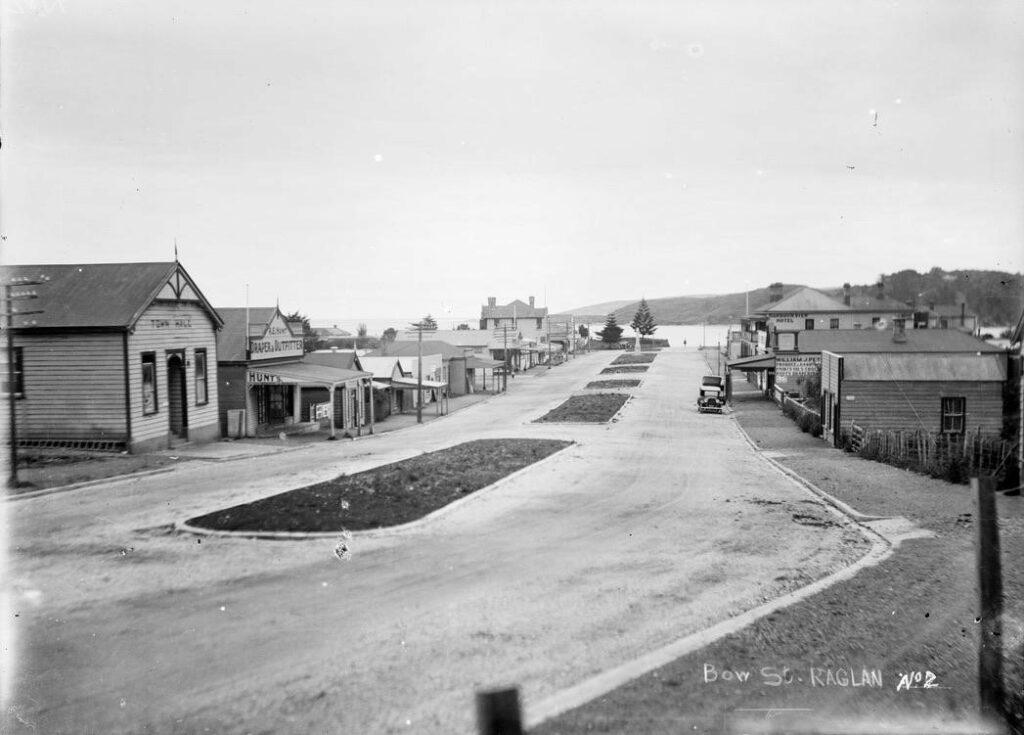
In March there were tenders to form, metal and culvert not only Bow St, but also Hills and Manukau Rds and to form and culvert Green, Wallis, Cliff and Main Sts. In December Cliff St was exempted from Section 117 of the Public Works Act that could require owners along narrow roads to give up to 33 feet for widening their road. Wi Neera St had been exempted in 1909.
£1,150 was spent on the main road in 1924 and £1,438 in 1925 and at Whatawhata a new truss bridge was built over the old bridge for £7,298. However, the implications of the 1922 Highways Act were still not fully understood. One councillor said the main road from Hamilton to Auckland would never be a main road, as the railway took that role. However, In 1923 the vote had gone against a light railway between Frankton and Raglan and in 1924 a rate of 3d was raised to cover the £4,000 of expenses for surveys, etc. The councillor was proved wrong a few days later, when the Highways Board recommended the Great South Rd, and several others, including Raglan’s main road, as Main Highways. The Audit Department decided counties should still pay for work the Board did on their roads. Ratepayers were willing to pay for the new roads. A meeting at Waitetuna school unanimously voted for a £2,000 loan to metal Waitetuna Valley road. A poll to raise £18,000 for road metalling in Te Akau-Waingaro ridings was won by 279 to 59. A July report said, “There is a proposal that Waingaro-Raglan landing be metalled, and there is also a possibility of establishing a ferry capable of carrying vehicles. If this eventuates a very fine round run will be obtainable; running from Hamilton to Raglan and Ngaruawahia”.
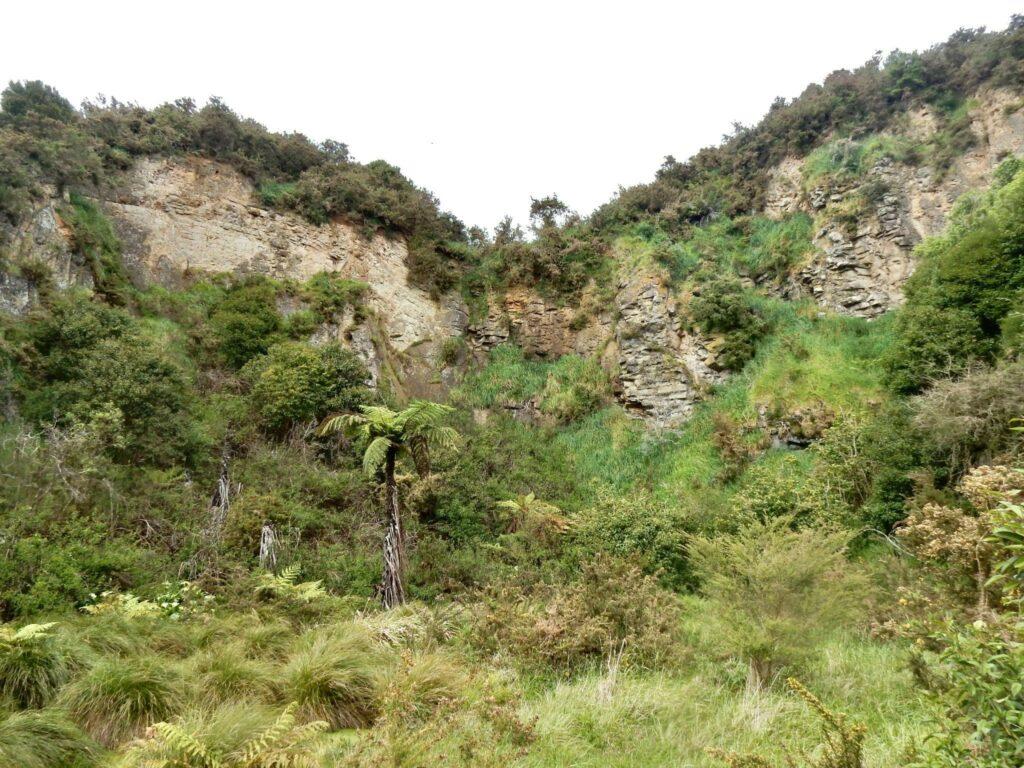
Voters would have known how bad some roads were. The Ranui Station manager lost a horse, when it fell through a bridge on Ohautira Rd. Okete Rd, at the Three Streams end, was “very deep in mud”, though some of the road had gravel and by March the whole road had, “blue metal from Te Uku Landing quarry”, despite some ratepayers writing that, with money dear and labour high, the £300 loan to metal Okete Rd should be postponed. Aotea beach road had pot-holes stopping wheeled traffic. RCC spent £12 on tide gauges at the river crossing of Aotea beach and £2,502 to improve the Waiteika stream ford, plus £4,600 at Makomako. Kawhia County put tide-gauges at the Maari crossing. In October Rev. C. W. Seton rode all night to catch the early morning tide to get to a Kawhia funeral and returned to Raglan with the afternoon tide.
Disputes over paying for roads continued. RCC turned down a Waipa County (Hamilton-Whatawhata) plan to seal the main road as too expensive. To help pay for the roads a 12 June 1924 RCC bylaw charged vehicle licence fees of up to £50, according to size and weight. However, in September, Noel Robertson won a court case, which reduced the fee back to a flat £5.
Noel ran a daily service car (bus) carrying passengers and mail to Hamilton at 7.30am and back at 1.45pm. In 1924 it was still part of AARD, which then served more routes than current bus services. Raglan was also getting frequent visits by Moa, Cambridge and AARD char-a-bancs, bringing visitors on day trips. In November, Hamilton Convent School had their annual picnic at Raglan, with over 160 children in 6 buses and several cars.
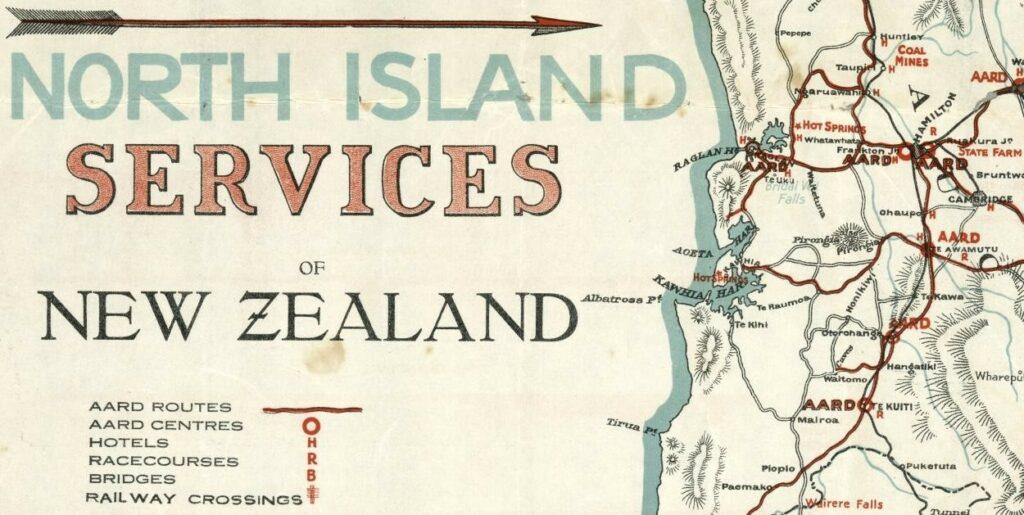
As a result Raglan was “fuller of visitors this summer than ever before”. The Royal Hotel had 22 rooms. At the Harbour View Hotel, the lessees changed from Mr. and Mrs. Orams to Mr. and Mrs. Alexander McLeod Baird, from the Thames Hotel, Auckland, as Mrs. Orams’ health was poor. Sections were advertised from £45 at Sandy Beach Estate. The track up Karioi must have been much less distinct in 1924. Three boys set off one afternoon, but reached the summit about 11am next morning.
Road accidents were also being reported. Stephens Bowers, a carpenter at the sawmill, dislocated his collarbone when his cycle collided with a car. A seven-seater taxi caught fire. An Auckland owned car collided with a lorry on a bend of the deviation and lost two wheels, but there were no serious injuries. Also on the deviation the mail car collided with a motor-cyclist, who was severely injured.
In 1924 Mr & Mrs William J. Petchell sold their Te Awamutu grocery to the Farmers’ Union Trading Co and bought a store on Bow St. With their children, Phyllis, Frank and Eric, they started 80 years of Petchell ownership. It was built as a greengrocer’s, sweet-shop and tearoom in 1906, when Alf Curtis moved to Raglan. During the 1914 war it was sold to Cowleys, then to O. C. Koed about 1920.
The Bow St building that is now Wyld eatery will be a century old in 2024. Tenders were invited up “till September 20th, 1924, for the erection of a General Store, Shop Fronts, Fittings, etc., for Messrs Gilmour Bros” and by October the new shop was being built.
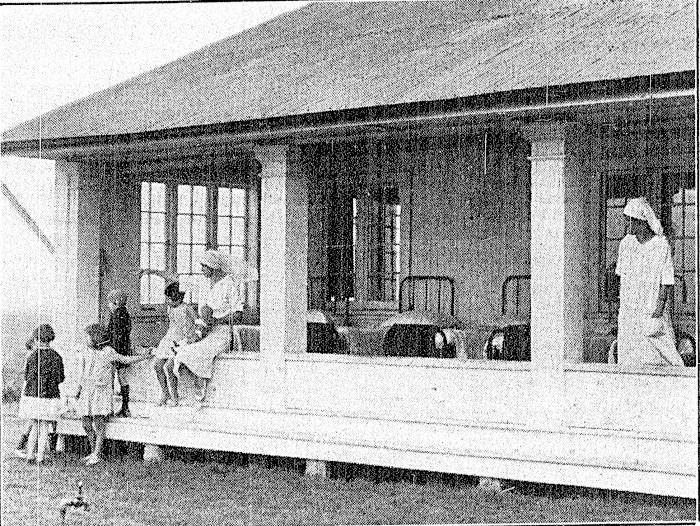
On Saturday 27 December 1924 the Bryant Home, for up to 50 convalescent children, was officially opened by Alexander Young, the Hamilton MP. George Jack, of Hamilton, built it for £4,900, starting in 1923. A report said, “The portion of the 75 acres of beautiful grounds not required for service of the house is to be laid out as a park and thrown open to the public for picnicking purposes on payment of a small charge.” Dan Bryant died in 1962 and the home was sold as a Bible Camp in 1967 and Lands & Survey (now Department of Conservation) had the Bryant Memorial Scenic Reserve by 1971. Vandalism was around in 1924, when the shrubbery around the home was damaged and a large king fern stolen.
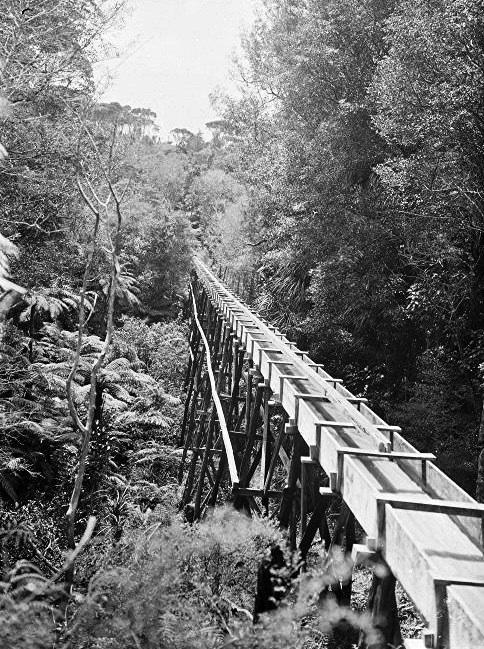
Water for the home was channelled from the Wainui stream, crossing a deep gully on a wooden aqueduct. At a time when the rest of Whāingaroa was still using oil lamps, the main use of the water was to drive a Pelton wheel electric generator, beside the beach, almost 100m. below, designed by Hamilton Borough’s electrical engineer. The Home had electric heat, light and cooking.
Water still comes from Wainui Stream, but in an alkathene pipe and the power plant presumably went shortly after mains power came in 1935. With the opening of the Home, Auckland AA pressed for road repairs and £447 was spent crushing limestone for Wainui road.
At the annual meeting of the Raglan District Medical Association membership had dropped slightly since 1916, with income down from £155 5s to £120 5s. In November Dr Roland Cashmore moved from Kawhia to take over, when Dr Walter Monckton Saunders resigned as he approached retirement age. He had been one of those on the committee promoting a railway for Raglan. A dentist also visited once a month.
Raglan’s last significant typhoid outbreak was of about 10 cases in September 1924, 4 of whom died. There was controversy when a Waikato Hospital patient wanted to die at home, but a constable, “set out after them in a car, and the patient was overtaken at Te Uku” and returned to hospital, where she died next day. Cases had previously been reported in 1862, 1866, 1887 and 1897. In 2022 there were 46 cases in the whole country, nearly all contracted abroad.
Radio was still in its infancy, with very few listeners, so social events continued as they had for many years. Farewell socials were reported for Maida Brown and Zoe Husband, leaving to become nurses at Waikato Hospital, to the Watson family in the Waitetuna school-room. Miss Given, Ruapuke postmistress for 30 years, had a presentation. Te Mata Hockey Club for Miss M. Brown and Betty Newton. Dances and fancy dress balls served for every occasion; for Te Mata school breaking-up day evening in the Memorial Hall, after Waitetuna school picnic, for Raglan and Waitetuna Tennis Clubs and Raglan Hockey Club, in Raglan Town Hall to celebrate the end of the football season, dances and euchre parties have been held in the schoolroom at Te Hutewai, the dance music being supplied by D. and A. Galvan and Mrs Sweetman (piano). A Sunday School social was held in the Okete Church. There were also picnics. Te Mata Sunday School picnic had games, races, afternoon tea, a short speech and prizes. There were equestrian sports and a car race at Te Mata. A euchre party and a fancy dress and masked ball was held for a supper-room at Te Mata Hall. Waitetuna and Te Uku had a series of surprise parties, “met with a very hearty welcome”. Guy Fawkes’ Day had fireworks followed by tripping on the “light fantastic toe.”

